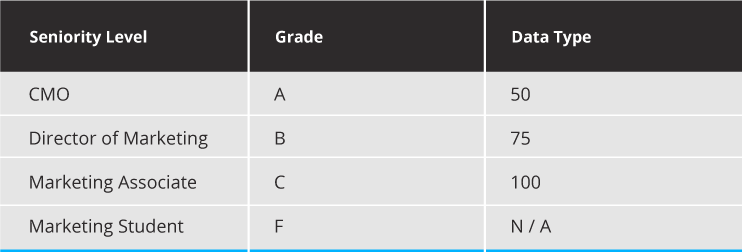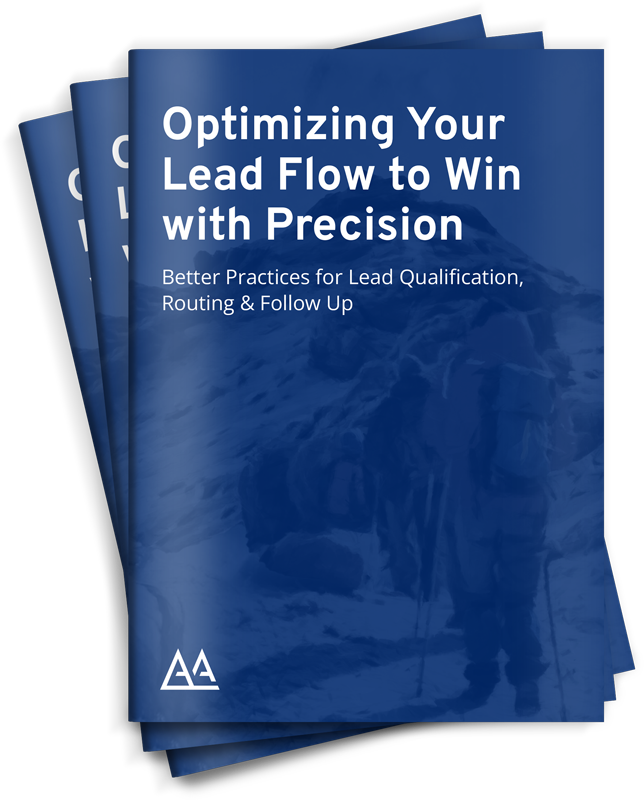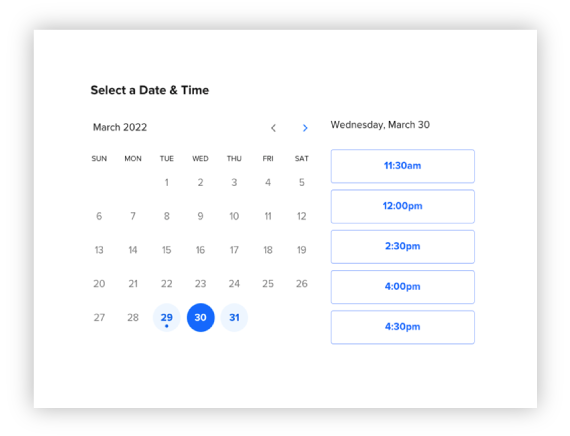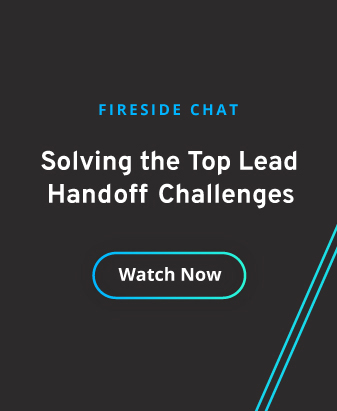What will slow down your funnel, cause leads to fall through the cracks, and provide a disjointed buyer experience to prospects? The absence of a defined marketing to sales lead handoff process.
Studies show that if sales is able to respond to a lead within five minutes or less they are far more likely to close the deal. However, if leads are not being handed off with accuracy and efficiency, then sales will not be able to accelerate their response times, thus leaving money on the table.
To find out what is considered best practice for an optimized marketing to sales lead handoff, I sat down with Craig Jordan, Founder & CEO of SaaScend on a fireside chat.
Lead Handoff Fireside Chat Main Takeaways
❶ What is the best way to define the marketing to sales lead handoff?
The best way to align marketing and sales with a defined lead handoff process is to record each aspect in a Service Level Agreement (SLA). The SLA includes:
-
-
- The agreed upon criteria for a Marketing Qualified Lead (MQL)
- How leads will be routed to sales
- The way in which sales will follow up
- The acceptable lead response time
-
The SLA keeps both marketing and sales accountable. Marketing is agreeing to a
certain level of lead quality that they are going to pass over to sales. Sales is agreeing to follow up within a certain timeframe and the methods they will use to do this.
❷ Aside from the typical lead qualification process, what are some other considerations that marketing and sales need to have when thinking through lead prioritization and the handoff?
Consider the difference in how sales should follow up between your nurture leads and your hand-raise leads. Hand-raising leads are prospects that have taken an action to actively say, “I want to talk to someone from the team now,” such as submitting to your “Request a Demo” form. Nurture leads are leads that are handed off from marketing that have engaged with enough content to reach their MQL Activity score threshold.
These concepts, along with lead scoring and grading, were referenced in a previous blog article on lead qualification, along with the below table (fig 1).

Figure 1 – An example of Marketing Qualified Lead activity score thresholds as they correspond to the grade assigned to the lead based on seniority.
The question is, what type of activity did the prospect take to reach their engagement score? For example, The CMO has an engagement score of 50, but the Director of Marketing has an engagement score of 75.
The CMO registered for a webinar, downloaded an ebook, and recently visited the services page on the website.
The Director of Marketing downloaded a pricing page, and submitted to the Request a Demo form.
Based on this scenario, the Director of Marketing would be a hand-raise lead which warrants a faster follow up from sales, while the CMO should be followed up shortly after because of their high-fit with the company’s Ideal Customer Profile (ICP).
❸ What is an example of a lead handoff process?
The process may differ slightly depending on how your business routes leads and if BDR’s or SDR’s are involved. Whichever the situation of the business, the main takeaway here is to automate the process. If leads are being passed from marketing into a queue where they are being manually assigned to their respective sales rep, this will take up the time of the Sales Manager or Marketer that is having to monitor this queue and will slow the process down, making for a delayed lead response time.
There are several ways your team can automate the lead handoff process based on the systems you have, but to give an example, Figure 2 illustrates a hand-raise lead hand-off.
A prospect visits our blog.

The prospect submits to our Audit Request Form.

A lead is created in Salesforce and a Round Robin lead assignment flow is triggered.

The lead is automatically assigned to the next sales rep in the queue.
A Slack notification is then sent to alert sales of the new lead assigned.
Figure 2 Caption: SaaScend’s marketing to sales lead handoff process for a hand-raise lead.

Accelerate Your Funnel with an Optimized Lead Hand-off
❹ What are some of your lead follow up recommended best practices?
The type of lead that is sent over to sales will determine the best method for follow up. For hand-raise leads, scheduling application platforms like Chili Piper or Calendly are super effective. Prospects that submit to a contact us form, or request a demo form, can then book a time with sales right then and there. An automated email can then be sent to the prospect from the sales team member saying that they are looking forward to the meeting.

The beauty of using a software for this allows for teams to be more sophisticated with who the time is booked with, depending on the field data that the lead provided such as the territory, the vertical, etc. This accelerates the funnel and helps sales to get more meetings booked.
If a prospect submits to a “hand-raiser” form that is the opposite of who sales would want to be talking to, automation in combination with lead qualification mechanisms can act as a gatekeeper to not show the calendar.
With nurture leads that are passed over to sales, consider using a sales engagement platform such as Outreach, SalesLoft, or Groove, where sales can set up email campaigns to follow up. A tip here is to segment leads based off of the content or previous campaigns that they engaged with. If this is already being done, take it a step further and segment by the prospect’s role at their company.
Rather than asking this type of lead to book a meeting right away, consider how you can provide value first. Share a piece of content with them that aligns to the topics they have taken interest in based on the campaigns they have already engaged with.
❺ How can marketing and sales determine if their newly aligned handoff process has proven to be successful?
Aside from the overall satisfaction that sales and marketing will most likely have with the other department, the key performance indicators for this are more than just “kum ba yah.”
Prior to implementing the newly defined handoff process, take some baseline measurements.
-
-
- What is the MQL acceptance rate?
- What is the average time it takes for a lead to get sent over to sales?
- What is the average lead response time?
- What is the current sales win rate for new business?
- What is the velocity of your current funnel, or how long does it take for a prospect to become a closed won deal?
-
After implementing the newly defined lead handoff process, and allowing for time to gather data, take the above same measurements. Have any of the numbers improved? What is the delta between before and after?
If there has been improvement, then the handoff process is working because the qualification process has been defined, everyone is aware of the routing process, there are procedures in place for lead follow up, and agreed upon lead response times.
Lead Handoff Biggest Mistake to Avoid
Thinking that a smooth lead handoff process will happen on its own without putting any time into it. – Operations that align marketing and sales and move leads through the funnel faster need to be prioritized. Manual and one-off actions may last for a period of time, but this is not scalable as the number of inbound leads increase and the company grows with a bigger sales team.
Fireside Chat in Nutshell
-
-
- Have marketing and sales meet to discuss their lead handoff process and define it with a Service Level Agreement to hold both parties accountable.
- Take into consideration the differences in lead follow up methods and acceptable response times for hand-raise leads versus nurture leads, while leveraging technology platforms within your organization to automate the process.
- Use the data from your lifecycle stage tracking to analyze funnel performance and determine if your newly implemented or optimized lead handoff process has been effective.
-

“Our close rate went from 9:1 to about 4:1. Better leads, fewer conversations.”

